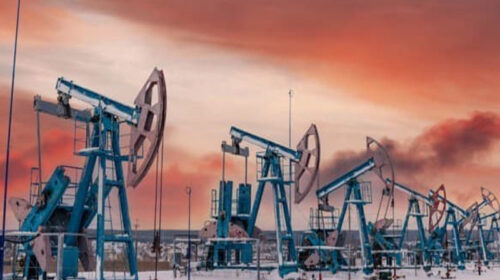Despite efforts from Canada’s Prime Minister Justin Trudeau to move away from oil sands – long hailed as the – Alberta, the country’s largest oil-producing region, is pushing to open new energy corridors with the U.S. to export its fossil fuels. As the global demand for oil and gas continues, and countries look closer to home to secure their energy needs, Alberta believes it can promote its oil sands as a means of providing the energy needed until enough green alternatives are being produced to meet the rising global energy demand.
The government of Alberta is, as always, backing the state’s oil industry in a big way with plans to establish economic corridors to the coast of Canada and Alaska. This is expected to allow the state to circumvent regulatory restrictions to transporting oil through new pipelines, helping Alberta to export its crude.
According to Pete Guthrie, Alberta’s energy minister, the energy corridors have already received pre-approved for rail, utilities, and crude oil and gas pipelines. Guthrie’s efforts are being supported by Alberta’s Department of Transportation, which has already entered into discussions with British Columbia, Manitoba, Saskatchewan, and First Nations communities and stakeholders.“An internal committee has been formed and we are developing a strategy… No timeline has been set as yet for the building of the corridors, with the focus now being on creating a strategic plan.”
New corridors from landlocked Alberta could help the state gain higher revenue from its oil sands, encouraging producers to boost output for export. Once oil products reach the port of Kitimat, British Columbia, or Churchill, Manitoba they could be bound for Asia and Europe, vastly expanding Canada’s energy links.
The new corridor strategy was established after several new oil and gas pipeline plans were blocked by American President Biden as well as Trudeau. Alberta has been finding it increasingly difficult to continue its production of oil sands due to environmental pressure to decarbonize operations. In addition, with several potential energy links with the U.S. and other parts of Canada halted in recent years, the industry has taken hit after hit.
But progress is being made with Alberta’s corridor plans, as links between the Canadian province and Texas may soon get the green light. Two major North American railways, Canadian Pacific and Kansas City Southern have proposed a $27 billion merger, which would help freight move across North America using.. The companies have signed a 10-year deal with ConocoPhillips Canada and USD Group to transport the oil across the U.S. Although the firms are still awaiting U.S. regulatory approval.
This route would provide the first direct link between oil-producing Alberta and the oil refineries in Port Arthur, on the Texas coast. The vice president of Texas-based midstream company USD Group stated, “We fully expect that the combination of the two railroads will only strengthen their support for this new source of bitumen.” This is not the first new oil rail link to be proposed, with Utah looking to transport oil sands from its Uinta basin.
But Texas residents and environmentalists across the country have unsurprisingly demonstrated their opposition to the merger. Residents worry about the additional freight traffic in the region causing major disruptions, as well as stating health concerns; while environmentalists are nervous about what impact a potential spill could have on the environment.
On 3rd February this year, a train carrying chemicals crashed and exploded in East Palestine, Ohio. This led to the evacuation of over 2,000 people and is threatening the local water supply. And according to the U.S. Department of Transportation, there were over 1,000 derailments across the U.S. in 2021, highlighting the severity of the threat. This has led both residents and environmentalists across the country to be cautious of any new freight links, particularly those carrying chemical products.
In addition to concerns about transporting oil sands via rail, environmentalists and politicians are also worried about encouraging greater oil sands production, which could be detrimental to achieving carbon-cutting goals in both the U.S. and Canada. In 2019, Alberta held the world’s third-largest oil reserves with 170 billion barrels. It had around 120 active oil sands projects, pumping 2.6 million bpd. Most of this oil was shipped as diluted bitumen, using light crude and chemicals, to the U.S. to be refined.
Operations to extract Alberta’s oil sands are causing immense damage to the landscape, as well as emitting extremely high levels of carbon emissions. Indigenous communities in Canada say that oil sands projects have had a “huge impact on caribou, bison, moose, birds, fish, the water, the forest.” Meanwhile, others argue about the anticipated cost of cleaning up after these developments, with the price of fixing mines and tailing ponds projected to cost around $195 billion.
New energy corridors could help the oil-rich Canadian province of Alberta to further develop its oil sands industry, exporting its products across North America and beyond. But political and public opposition continues to pose a threat to any development. Having seen the cancellation of several pipeline projects in recent years, Alberta’s hopes of developing large-scale energy links with Canada’s coastal cities and the U.S. may never play out. But if they do, we could see a massive expansion in Canada’s oil sands sector.






